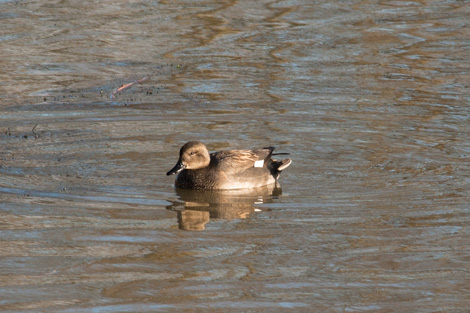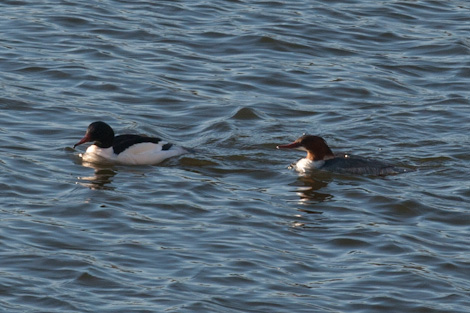In the last few months I have been spending some time watching the ducks at Daventry Country Park. There don’t tend to be any unusual ducks there (at least not when I’m looking) but there are usually lots of them in the winter and several of the usual species.
One duck that I usually find there all year round is the gadwall. At first glance it is just a brown duck – the drakes and ducks are both brown. But, when you look more closely (unfortunately something my photo is not good enough to allow), there is an awful lot of detail – grey stripes and speckles – which makes them look very dapper indeed. The female looks very much like a mallard female, the picture above is a drake. Both sexes have the white flash on the wing bar, but the drake has that black patch at the rear end along with a black bill (the female’s is black on top and orange at the bottom) and beautiful chestnut feathers on the wings above the white bar.
Although the gadwall is here all year round, the numbers are boosted in the south east and midlands with birds from eastern Europe.
I don’t remember seeing gadwall when I was growing up (even on visits to Martin Mere). This might be because I just didn’t notice them or because back in the 1970s and 80s there weren’t many in the UK, especially not outside the south east. Numbers have increased about 5 per cent a year for the last 25 years. The release of captive birds, including a large number in Leicestershire, is a possible reason for their increased range and numbers.
So, next time you decide not to notice a grey-brown bird with a white wing patch – have a change of heart and a closer look – they really are a lovely dabbling duck.

